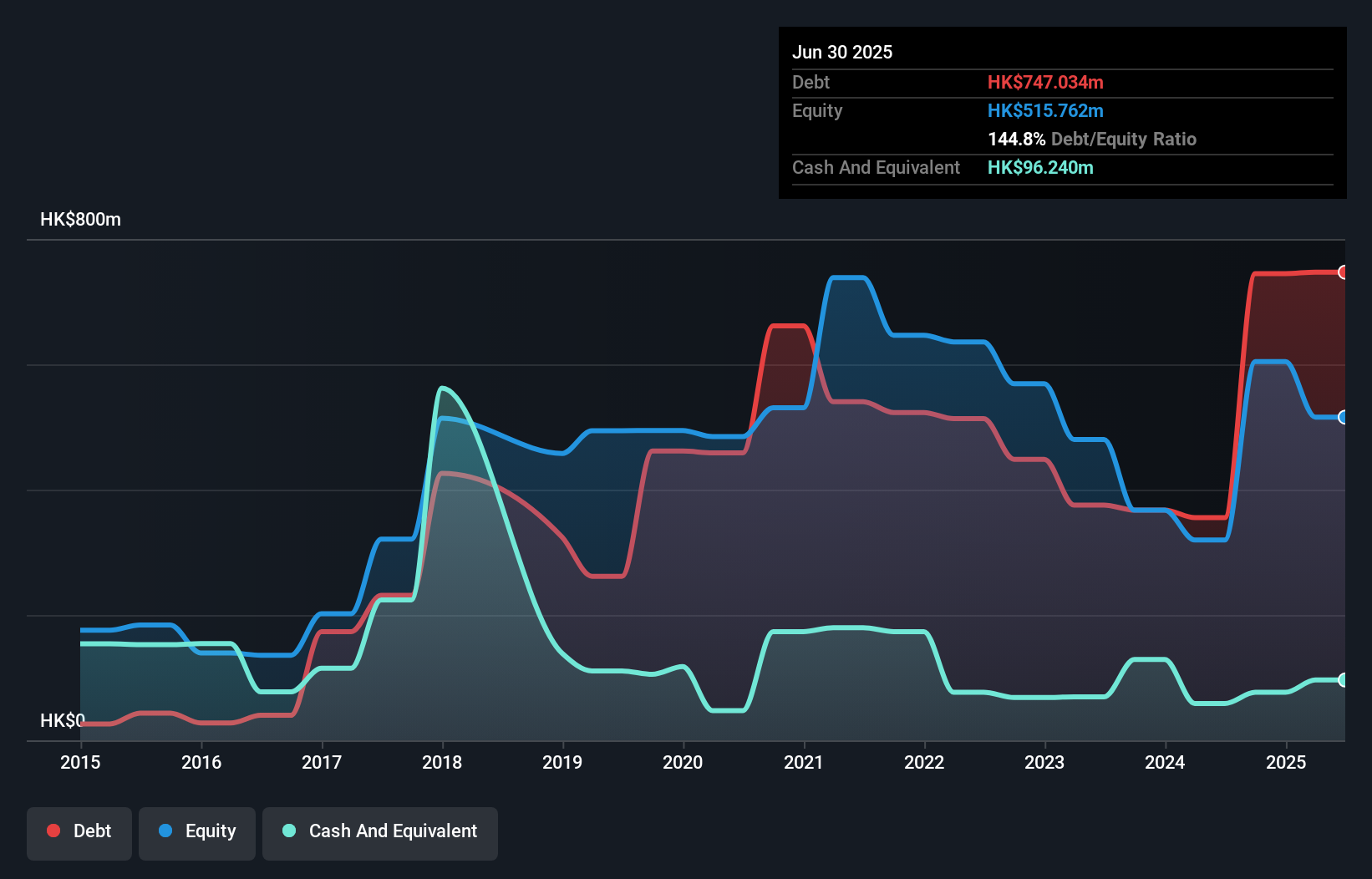We Think Pak Tak International (HKG:2668) Has A Fair Chunk Of Debt
The external fund manager backed by Berkshire Hathaway's Charlie Munger, Li Lu, makes no bones about it when he says 'The biggest investment risk is not the volatility of prices, but whether you will suffer a permanent loss of capital.' So it seems the smart money knows that debt - which is usually involved in bankruptcies - is a very important factor, when you assess how risky a company is. Importantly, Pak Tak International Limited (HKG:2668) does carry debt. But should shareholders be worried about its use of debt?
When Is Debt Dangerous?
Debt and other liabilities become risky for a business when it cannot easily fulfill those obligations, either with free cash flow or by raising capital at an attractive price. If things get really bad, the lenders can take control of the business. However, a more common (but still painful) scenario is that it has to raise new equity capital at a low price, thus permanently diluting shareholders. Of course, plenty of companies use debt to fund growth, without any negative consequences. The first step when considering a company's debt levels is to consider its cash and debt together.
How Much Debt Does Pak Tak International Carry?
You can click the graphic below for the historical numbers, but it shows that as of June 2025 Pak Tak International had HK$747.0m of debt, an increase on HK$355.3m, over one year. On the flip side, it has HK$96.2m in cash leading to net debt of about HK$650.8m.

How Healthy Is Pak Tak International's Balance Sheet?
Zooming in on the latest balance sheet data, we can see that Pak Tak International had liabilities of HK$1.18b due within 12 months and liabilities of HK$127.6m due beyond that. Offsetting this, it had HK$96.2m in cash and HK$483.3m in receivables that were due within 12 months. So its liabilities total HK$729.8m more than the combination of its cash and short-term receivables.
This deficit is considerable relative to its market capitalization of HK$1.02b, so it does suggest shareholders should keep an eye on Pak Tak International's use of debt. Should its lenders demand that it shore up the balance sheet, shareholders would likely face severe dilution. There's no doubt that we learn most about debt from the balance sheet. But you can't view debt in total isolation; since Pak Tak International will need earnings to service that debt. So if you're keen to discover more about its earnings, it might be worth checking out this graph of its long term earnings trend.
See our latest analysis for Pak Tak International
Over 12 months, Pak Tak International reported revenue of HK$741m, which is a gain of 2.4%, although it did not report any earnings before interest and tax. We usually like to see faster growth from unprofitable companies, but each to their own.
Caveat Emptor
Importantly, Pak Tak International had an earnings before interest and tax (EBIT) loss over the last year. Indeed, it lost HK$68m at the EBIT level. Considering that alongside the liabilities mentioned above does not give us much confidence that company should be using so much debt. So we think its balance sheet is a little strained, though not beyond repair. For example, we would not want to see a repeat of last year's loss of HK$306m. So we do think this stock is quite risky. When analysing debt levels, the balance sheet is the obvious place to start. However, not all investment risk resides within the balance sheet - far from it. We've identified 3 warning signs with Pak Tak International (at least 2 which make us uncomfortable) , and understanding them should be part of your investment process.
If you're interested in investing in businesses that can grow profits without the burden of debt, then check out this free list of growing businesses that have net cash on the balance sheet.
New: Manage All Your Stock Portfolios in One Place
We've created the ultimate portfolio companion for stock investors, and it's free.
• Connect an unlimited number of Portfolios and see your total in one currency
• Be alerted to new Warning Signs or Risks via email or mobile
• Track the Fair Value of your stocks
Have feedback on this article? Concerned about the content? Get in touch with us directly. Alternatively, email editorial-team (at) simplywallst.com.
This article by Simply Wall St is general in nature. We provide commentary based on historical data and analyst forecasts only using an unbiased methodology and our articles are not intended to be financial advice. It does not constitute a recommendation to buy or sell any stock, and does not take account of your objectives, or your financial situation. We aim to bring you long-term focused analysis driven by fundamental data. Note that our analysis may not factor in the latest price-sensitive company announcements or qualitative material. Simply Wall St has no position in any stocks mentioned.
About SEHK:2668
Pak Tak International
An investment holding company, engages in the supply of non-ferrous metals and construction materials in Hong Kong and the People’s Republic of China.
Mediocre balance sheet with low risk.
Market Insights
Community Narratives




